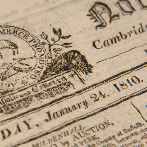If we make it, they might come… but it is a fact that any newly launched digital collection has to compete for attention with a huge amount of material already available on the web. Resource creators, therefore, have the challenging task of devising ways in which to interest and engage potential users.
Projects within the JISC digitisation programme recently attended a workshop which focused on how best to engage users with digital resources, the challenges this poses but also the many possibilities offered by online collections to be exploited in an interdisciplinary way.
Workshop leaders presented a framework for e-learning engagement, the Digital Artefacts for Learner engagement (DiAL-e Framework), that provides guidance on different approaches, or learning designs, that one can adopt to engage users with the resources.



Part of the workshop also explored, through group work, the value of working across collections in an interdisciplinary way. Groups made up of representatives of different digitisation projects were assigned the task to devise a question for students that would allow them to research a topic by consulting material available from their different collections.
One group, made up by staff from the John Johnson collection of Electronic Ephemera, British Newspapers and 19th Century Pamphlets projects, came up with the fictitious question, “Did Bob’s Pills cure gout?”.
As the group spokesperson explained, “only by searching to and fro between all three of the resources represented by our group, could a user discover the real story of ‘Bob’s Pills’ – the early promise (advertising testimonials – ‘Miraculous!’), the scandal (newspaper reports of nasty side effects) and the dodgy methods employed by its powerful parent company ‘Robert’s Medicines’ to try and retain its credibility (using editorial clout to influence debate in medical pamphlets).”
Finding the right answer was not the primary aim of the exercise, but far more important was the interesting journey of discovery that this process led to.
